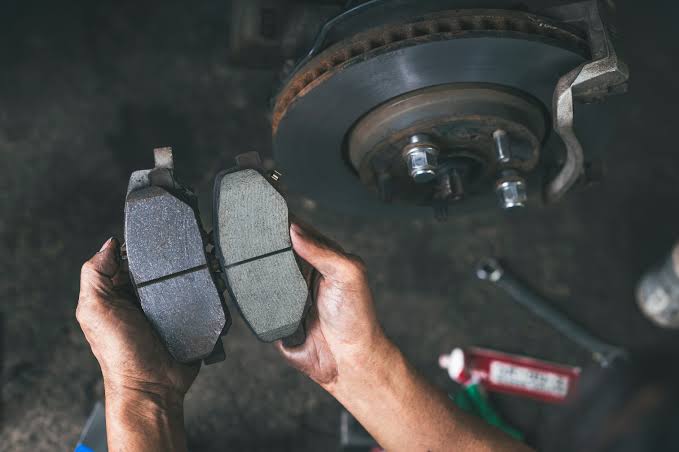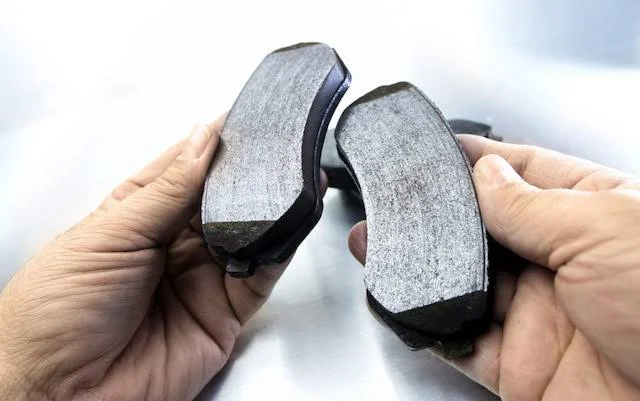The average vehicle in coastal Florida experiences brake rotor corrosion 300% faster than identical cars in Arizona's desert climate. This stark reality reveals a critical oversight in brake pad selection that affects millions of drivers living near oceans, in humid climates, or regions with frequent precipitation.
Your brake pad choice directly impacts your vehicle's ability to combat the relentless enemy of corrosion. While marketing materials focus on stopping power and longevity, they often ignore a fundamental performance difference that can mean the difference between safe, reliable braking and dangerous brake fade in corrosive environments.
I've seen countless drivers in coastal and rainy regions struggle with premature brake replacement, reduced stopping power, and safety concerns that could have been avoided with proper brake pad selection. The solution isn't complicated, but it requires understanding how different brake pad materials interact with corroded rotor surfaces.
The Hidden Problem with Ceramic Brake Pads
Ceramic brake pads dominate the aftermarket due to their quiet operation, minimal dust production, and excellent longevity under normal conditions. However, their smooth, less abrasive composition creates a significant disadvantage in corrosive environments.
When brake rotors develop surface corrosion from moisture, salt, or humid air, ceramic pads struggle to remove these deposits effectively. The ceramic material lacks the abrasive properties necessary to scrape away rust and corrosion, allowing these contaminants to build up between the pad and rotor surface.
This buildup creates an insulating layer that reduces friction coefficient and heat transfer. The result is longer stopping distances, increased brake fade, and potentially dangerous braking performance when you need it most.
Research from the Society of Automotive Engineers confirms that ceramic brake pads can create “excessive rotor wear if rotors are not the same high quality as the brake pads themselves”. This problem becomes amplified when corrosion creates uneven rotor surfaces that ceramic pads cannot adequately clean.
Why Metallic Pads Excel in Corrosive Conditions
Semi metallic brake pads contain steel fibers, copper, and other metallic particles that provide natural abrasive properties. These materials actively scrape and clean the rotor surface during each braking event, removing surface rust and corrosion that would otherwise accumulate.
The metallic content serves a dual purpose. First, it provides excellent heat dissipation, preventing brake fade during extended use. Second, the harder metallic particles act as microscopic abrasives that maintain clean contact surfaces between the pad and rotor.
This self cleaning action becomes critical in environments where rotors regularly develop surface corrosion. Each brake application effectively removes the oxidation layer, maintaining optimal friction characteristics and preventing the buildup of insulating corrosion deposits.
According to automotive friction specialists, “steel provides strength and conducts heat away from rotors, but it also makes pads noisy. Steel also acts like an abrasive and causes rotor wear”. While this abrasive action increases rotor wear under normal conditions, it becomes a crucial advantage in corrosive environments where cleaning action outweighs wear concerns.
Environmental Factors That Demand Metallic Pads
- Coastal regions: Salt air creates an aggressive corrosive environment that attacks brake rotors continuously. The combination of salt, moisture, and temperature fluctuations accelerates corrosion formation faster than ceramic pads can manage.
- High humidity climates: Areas with consistent humidity above 70% create conditions where brake rotors develop surface rust between driving sessions. This overnight corrosion accumulation requires the abrasive action of metallic pads to maintain proper contact surfaces.
- Frequent rain exposure: Vehicles regularly exposed to precipitation develop surface corrosion that ceramic pads cannot effectively remove. The water acts as a catalyst for oxidation, creating a constant battle between corrosion formation and pad cleaning ability.
- Winter salt exposure: Road salt creates one of the most aggressive corrosive environments for brake systems. The combination of salt, moisture, and temperature cycling demands the superior cleaning action that only metallic pads can provide.
The Performance TRADE offs
Choosing metallic pads for corrosive environments requires accepting certain compromises. These pads produce more brake dust, create additional noise during operation, and may increase rotor wear under normal conditions.
However, these disadvantages become negligible when compared to the safety risks of reduced braking performance from corroded rotors. The additional rotor wear from metallic pads often proves less costly than premature rotor replacement due to corrosion damage that ceramic pads cannot prevent.
The increased brake dust from metallic pads also serves as a visual indicator of proper pad-to-rotor contact. This dust confirms that the pads are actively cleaning the rotor surface, removing corrosion and maintaining optimal friction characteristics.
Identifying Your Risk Level
Determine your corrosion risk by honestly assessing your driving environment. If you live within 20 miles of an ocean, experience frequent fog or high humidity, or regularly drive on salt treated roads, you operate in a high corrosion environment.
Park your vehicle outdoors overnight in these conditions creates additional risk. Covered parking reduces moisture exposure but cannot eliminate the corrosive effects of salt-laden air or high humidity.
Consider your driving patterns as well. Vehicles driven daily have less opportunity for corrosion buildup than those parked for extended periods. However, even daily drivers in corrosive environments benefit from the cleaning action of metallic pads.
Making the Right Choice
For drivers in moderate to high corrosion environments, semi-metallic brake pads provide superior long-term performance and safety compared to ceramic alternatives. The additional noise and dust represent minor inconveniences compared to the peace of mind that comes from reliable braking performance.
Consider upgrading to premium metallic pads designed for your specific vehicle. These formulations balance abrasive properties with acceptable noise levels and dust production, providing optimal performance for corrosive environments.
Avoid the temptation to choose ceramic pads based solely on marketing claims about quiet operation and minimal dust. These benefits disappear quickly when corrosion reduces braking effectiveness and creates safety hazards.
Maintenance Considerations
Metallic pads require more frequent wheel cleaning due to increased dust production. However, this maintenance pays dividends in brake system longevity and performance reliability.
Inspect your brake rotors regularly for signs of corrosion buildup. Properly functioning metallic pads should maintain clean, smooth rotor surfaces with minimal rust accumulation in the contact areas.
Consider having your brake system inspected more frequently if you operate in high-corrosion environments. The combination of aggressive conditions and the cleaning action of metallic pads can accelerate component wear that requires professional monitoring.
The Bottom Line
Brake pad selection significantly impacts your vehicle's safety and performance in corrosive environments. While ceramic pads offer advantages in clean, dry conditions, their inability to combat rotor corrosion makes them unsuitable for coastal, humid, or salt-exposed driving conditions.
Semi metallic brake pads provide the abrasive cleaning action necessary to maintain optimal braking performance in these challenging environments. The trade-offs in noise and dust production pale in comparison to the safety benefits of reliable, consistent braking power.
Your brake system represents the most critical safety component on your vehicle. Choose brake pads that match your operating environment, not marketing claims or cost considerations. In corrosive conditions, metallic pads offer the performance and reliability that ceramic alternatives cannot match.


Comments (0)
Please login to join the discussion
Be the first to comment on this article!
Share your thoughts and start the discussion